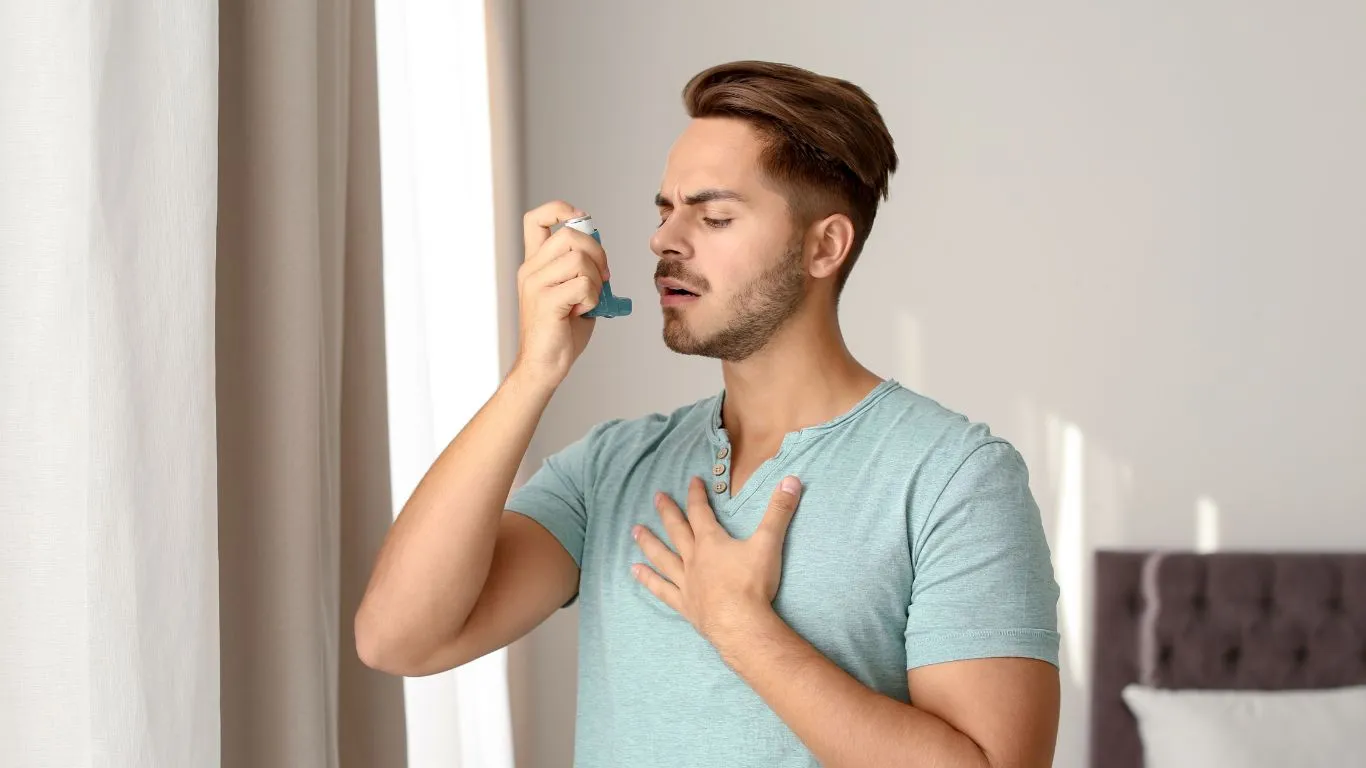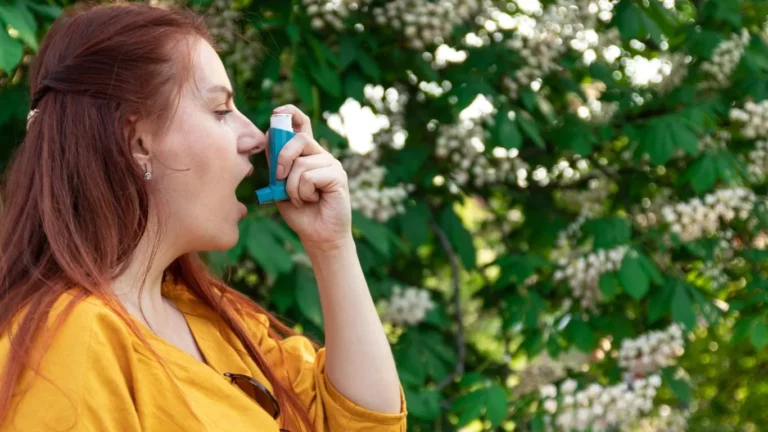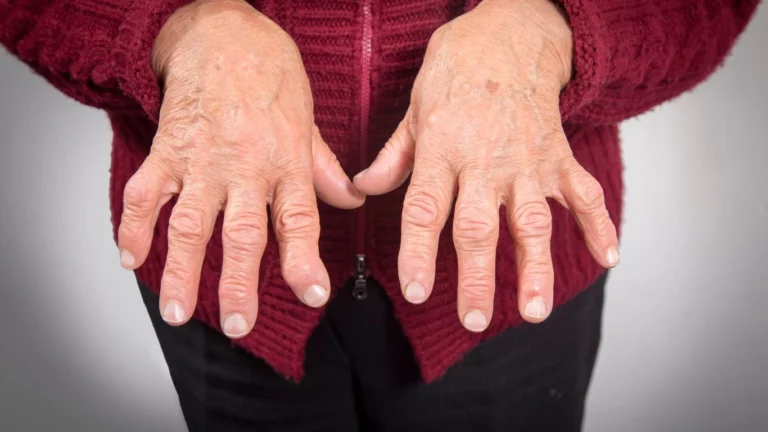Asthma Linked to High Histamine Levels: A Hidden Trigger You Can Tame
When I first began working as a pulmonary nurse practitioner, I never imagined how often I’d come across patients whose asthma just didn’t respond the way we’d expect. You follow all the protocols—prescribe the inhalers, check for allergens, even run those routine spirometry tests. But some folks? They’d still wheeze, cough, and feel tight-chested no matter what we did. That’s when I started digging a bit deeper. One pattern kept popping up in my clinical notes: a surprising number of these tough-to-treat asthma cases were linked to high histamine levels. And let me tell you—when I started putting those puzzle pieces together, it changed the game for a lot of my patients.
Is Histamine the Hidden Culprit in Your Asthma?

Let’s get real—when most people think of histamine, they think of itchy eyes, runny noses, or seasonal allergies. But histamine isn’t just that annoying thing that makes you sneeze during spring. It’s actually a powerful chemical messenger in the body that affects everything from your gut to your lungs. And for some folks, especially those with asthma linked to high histamine levels, it may be quietly making your breathing a whole lot harder.
When histamine builds up—either because your body is overproducing it or you’re not breaking it down efficiently—it can trigger a chain reaction that mimics or worsens asthma symptoms. I’ve seen patients with what looked like classic asthma, but their meds barely touched the symptoms. Once we started addressing histamine, though? Boom—night and day difference.
What Exactly Is Histamine and Why Should Asthma Patients Care?
So here’s the deal: histamine is part of your immune response. Your body releases it when it thinks you’re under attack—say, by pollen, mold, or even certain foods. It’s great at dilating blood vessels and increasing mucus production, both of which are necessary to flush out “invaders.” But if you’ve got asthma, this overreaction can backfire.
- More mucus = more congestion
- Wider blood vessels = inflammation in airway tissues
- Muscle contractions = bronchospasms
Sound familiar? That’s because these are all hallmark signs of asthma attacks. Now imagine them all happening at once—every time your histamine spikes.
Real Talk from the Clinic
I remember one patient—a young mom who’d been in and out of the ER four times in a single winter. Her asthma wasn’t improving, even with daily corticosteroids and long-acting bronchodilators. After reviewing her history, I noticed her flares followed the same pattern as her migraines and gut issues. Lightbulb moment: we tested her for histamine intolerance. Sure enough, she had elevated histamine levels and a DAO enzyme deficiency (that’s the enzyme that helps break histamine down).
We shifted gears—modified her diet, reduced her exposure to high-histamine foods, and added a DAO supplement. Within weeks, her symptoms started to back off. No magic pill. Just a new way of thinking.
How Histamine Works Against Your Lungs

Now, I’m not saying histamine causes asthma outright—but in people with asthma, it’s like throwing gasoline on a smoldering fire. The lungs are already sensitive, inflamed, and hyper-reactive. Add histamine, and you get:
- Increased airway inflammation: More swelling means less space for air to move.
- Heightened bronchoconstriction: Those tight, wheezy episodes? Histamine may be playing a role.
- Elevated mucus production: Which clogs up your bronchi and makes it harder to breathe.
What’s wild is that standard asthma treatments don’t always address this angle. Steroids reduce inflammation, but they don’t touch histamine production directly. Antihistamines? Most asthma patients aren’t even prescribed them unless they’ve got full-blown allergies. It’s a big oversight, in my opinion.
What Triggers High Histamine Levels?
Here’s where it gets really interesting (and also a bit frustrating). Histamine can sneak into your system in all kinds of ways, and you may not even realize it’s building up. Some common culprits include:
- Food sources: Aged cheeses, wine, smoked meats, fermented foods
- Environmental triggers: Pollen, dust mites, mold, pet dander
- Medications: NSAIDs, certain antibiotics, antidepressants
- Gut health imbalances: Poor digestion and enzyme deficiency (especially DAO)
And here’s something I’ve learned first-hand—sometimes, the problem isn’t that your body makes too much histamine, but that it doesn’t break it down quickly enough. That’s where genetics, enzyme function, and diet all come into play.
When Asthma Treatments Fall Short, Look at Histamine

There’s no one-size-fits-all approach to asthma, and that’s especially true when histamine is in the picture. Some of the patients I’ve worked with saw better symptom control just by tweaking their diet and adding natural antihistamines. Others needed more testing—like for DAO enzyme activity or hidden food sensitivities—to really get to the root cause.
If you’re someone who’s been doing all the “right” things but still struggling with tight lungs, wheezing, or unexplained asthma flares, it’s worth asking: could histamine be part of your story?
In the next section, we’ll dive deeper into the signs of histamine intolerance, how to test for it, and practical steps you can take to breathe easier—without adding yet another prescription to your list.
Spotting the Signs: Is Histamine Intolerance Making Your Asthma Worse?

Let’s dive right into it—because if you’re anything like some of my patients, you’ve probably been chalking up all your strange symptoms to “just asthma” for way too long. Truth is, asthma linked to high histamine levels doesn’t always play by the rules. It doesn’t show up like textbook asthma. And once you understand the symptoms of histamine intolerance, things start to click into place fast.
I had one guy—mid-thirties, athletic, great diet (or so he thought), but constantly battling post-exercise wheezing and brain fog. Turned out, he was pounding histamine-rich foods like kombucha, tuna, and spinach every day, and his DAO levels were tanked. We cut back those foods, supported his gut, and it made a massive difference.
Common Signs That Histamine Might Be Involved
Here’s what to look for. Some of these might surprise you:
- Frequent headaches or migraines (especially after eating or weather changes)
- Flushed skin or unexplained rashes
- Fast heart rate or palpitations after meals or during asthma flares
- Chronic nasal congestion or post-nasal drip
- Fatigue and brain fog
- Digestive issues like bloating, nausea, or diarrhea
- Sudden asthma symptoms after fermented or aged foods
If you’re nodding along, don’t worry—you’re not imagining it. These are all well-documented signs of histamine intolerance, and I’ve seen them show up again and again in people whose asthma wasn’t improving despite medication.
Testing for Histamine Intolerance: What You Need to Know

Here’s where it can get a little tricky. There’s no gold-standard lab test for histamine intolerance, and most primary care offices won’t screen for it unless you ask. But that doesn’t mean you’re out of luck. In fact, there are a few ways to figure out if histamine might be at the root of your asthma flares:
Start with a Symptom Diary
This is my go-to advice for patients. Track your meals, symptoms, and asthma severity for two to three weeks. Look for patterns. Do your symptoms worsen after red wine? Sauerkraut? Chocolate? Those are high-histamine foods that can tip the balance.
Consider DAO Testing
If you’re really digging in, some functional medicine labs do offer DAO enzyme activity tests. DAO (diamine oxidase) is the main enzyme that breaks down histamine in the gut. Low DAO = higher circulating histamine = more asthma chaos.
Try a Low-Histamine Diet Trial
I’ve walked dozens of patients through this one. Go low-histamine for 10–14 days. If your asthma improves and your weird symptoms start fading, that’s a clue. It’s not forever, just long enough to see how your body responds when it’s not being bombarded.
What to Eat (and Avoid) When Histamine’s the Problem

Look, I get it—changing your diet is never fun, especially when you’re already juggling life, work, and asthma meds. But I’ve seen too many “impossible” cases turn around with just a few smart swaps. The goal isn’t perfection. It’s awareness and balance.
Foods to Avoid or Minimize
- Aged cheeses (sorry, brie lovers!)
- Processed meats like salami, bacon, ham
- Fermented goodies—sauerkraut, kimchi, kombucha
- Alcohol, especially red wine and beer
- Leftovers (histamine builds the longer food sits)
- Spinach, eggplant, avocado, tomatoes (moderation is key)
Low-Histamine-Friendly Foods
- Freshly cooked meats and fish (same-day prep is best)
- Leafy greens (except spinach)
- Apples, pears, blueberries
- White rice, oats, quinoa
- Herbal teas like chamomile or rooibos
- Fresh herbs—parsley, basil, thyme
With a bit of planning, you can absolutely eat well without triggering histamine overload. I usually recommend starting slow—replace one histamine-heavy meal per day with a low-histamine option and build from there.
Natural Ways to Support Histamine Balance
Medications definitely have their place, but I’m a big fan of supporting the body’s natural systems whenever possible—especially with something as layered as asthma. Over the years, these have become my favorite non-pharma tools to manage histamine-related asthma:
- DAO enzyme supplements: These can help break down histamine in the gut, especially if you’re low on your own.
- Vitamin C: It’s a natural antihistamine and supports immune function—win-win.
- Quercetin: A bioflavonoid that helps stabilize mast cells (the little buggers that release histamine).
- Magnesium: Calms the nervous system and may help with bronchial relaxation.
- Probiotics (with caution): Some strains support histamine breakdown, but others can make things worse. Stick with low-histamine strains like Lactobacillus rhamnosus or Bifidobacterium infantis.
Again, everyone’s different—so work with a practitioner who understands how all this connects. The one-size-fits-all approach? Doesn’t cut it here.
When It’s More Than Just Food: Other Histamine Triggers to Watch
Diet is a major player, but it’s not the whole picture. I’ve had patients with super clean diets still struggling with symptoms—until we looked at the other stuff. Histamine overload can come from environmental and lifestyle factors too.
Other Triggers That Can Tip You Into a Flare
- Stress: Yep, cortisol affects histamine levels. Chronic stress = higher histamine production.
- Hormones: Many women see symptom spikes before their period due to estrogen’s effect on histamine.
- Environmental allergens: Pollen, mold, pet dander—all of these cause mast cells to dump histamine.
- Heat and exercise: Some folks experience histamine release from sweating or heat exposure (hello, exercise-induced asthma).
Managing these factors—alongside dietary adjustments—often gives people the relief they didn’t think was possible. And honestly, there’s nothing better than seeing someone who’s been struggling for years finally catch their breath. Literally.
Managing Asthma Linked to High Histamine Levels: Real-World Strategies That Work

By now, if you’ve been following along, you probably realize that dealing with asthma linked to high histamine levels isn’t just about puffers and peak flows—it’s about understanding your body’s deeper chemistry. And trust me, once you shift your perspective, things start falling into place. I’ve helped patients who spent years feeling stuck in their asthma journey—only to find relief by addressing histamine imbalances. It’s incredibly rewarding to witness that shift.
Let’s talk about how to actually live with this day to day. Because let’s face it: theory is great, but we need real-life tools that work in the chaos of life—kids, jobs, stress, meals on the fly. Here’s how I guide my patients (and honestly, how I manage my own histamine-triggered issues too).
Build a Personalized “Trigger Toolkit”
This is where I always start. Grab a journal or a phone app and track what sets off your symptoms. Is it wine at dinner? A stressful meeting? Cold weather workouts? We’re all wired differently, and no two histamine responses look the same.
From that info, we create a trigger list—things to avoid, limit, or prep for. Over time, you’ll notice that just being aware of your patterns makes it easier to steer clear of your own flare landmines.
Supplements That Support Histamine Balance

Now, I’m not about to say “just take a supplement and call it a day.” But in my clinical experience, smart supplementation can help stabilize the terrain so you’re not constantly in reactive mode. These are some of the most well-tolerated options I recommend—of course, always check with your healthcare provider first:
- Vitamin C: Reduces histamine levels and supports adrenal health, which can get depleted during chronic stress.
- Quercetin: This natural flavonoid is a mast cell stabilizer, meaning it helps prevent the release of histamine.
- DAO enzyme: Especially useful for those with confirmed DAO deficiency. Best taken before high-histamine meals.
- Stinging nettle extract: Another natural antihistamine that’s been studied for both allergies and mild asthma support.
- B-complex vitamins: Essential for methylation, which plays a role in histamine metabolism.
I’ve seen patients go from daily inhaler use to occasional needs, simply by supporting these underlying systems. It’s not magic—it’s physiology.
Supporting the Gut: Your Body’s Histamine Regulator

Here’s something I wish more asthma guides mentioned: your gut is ground zero for histamine regulation. Roughly 70% of your immune system lives in the gut, and many of the enzymes that break down histamine—like DAO—are produced there.
If your gut’s inflamed, leaky, or overloaded with the wrong bacteria, your body’s ability to manage histamine gets thrown off. I’ve worked with patients who didn’t respond to anything until we addressed their gut health. A few tips:
- Eat anti-inflammatory foods: Think bone broth, cooked vegetables, wild-caught fish, and low-histamine fruits.
- Limit processed sugar and refined grains: These feed bad bacteria and worsen inflammation.
- Try digestive enzymes: Some blends support histamine breakdown and nutrient absorption.
- Consider probiotics: But be cautious—certain strains like Lactobacillus casei and bulgaricus may increase histamine. Stick with ones like Bifidobacterium infantis or Lactobacillus rhamnosus GG, which tend to be better tolerated.
Breathing Techniques and Lifestyle Tweaks
Sometimes the basics are overlooked, but they matter. Simple, consistent breathing practices can downregulate your stress response and help modulate histamine production.
I often teach patients the Buteyko breathing method or box breathing (inhale 4, hold 4, exhale 4, hold 4) during asthma flares. The goal is to calm the nervous system, which in turn dials down the immune system overdrive.
Other lifestyle tweaks I swear by:
- Sleep: 7–9 hours nightly helps regulate immune and mast cell activity.
- Stress management: Yoga, meditation, walking—whatever works for you. I even have a patient who swears by coloring books. Go figure!
- Hydration: Dehydration concentrates histamine. Sip water throughout the day, not just when you’re thirsty.
When to See a Specialist (And What to Ask For)

If you’ve tried some of these tips and still feel like your asthma is running the show, it may be time to bring in backup. Look for a provider—whether it’s a pulmonologist, allergist, or functional medicine practitioner—who understands histamine intolerance and complex asthma cases.
Here are a few things to ask about:
- DAO enzyme testing or plasma histamine testing
- Comprehensive stool analysis to look at gut health markers
- IgG or IgE food sensitivity testing if certain meals set off your asthma
- Support for estrogen and hormone-related histamine symptoms in cycling women
There’s no shame in needing help. Chronic asthma—especially when histamine is in the mix—can be complex. But you don’t have to keep living in survival mode.
References
Disclaimer
This content is for informational and educational purposes only and does not substitute professional medical advice or consultations with a qualified healthcare provider. Always seek the guidance of your physician or a licensed medical professional regarding any questions you may have about a medical condition or treatment.

Bianca Nala is a compassionate Nurse Practitioner with a strong background in primary and respiratory care. As a health writer for Healthusias.com, she combines her clinical expertise with a talent for clear, relatable storytelling to help readers better understand their health. Bianca focuses on topics like asthma, COPD, chronic cough, and overall lung health, aiming to simplify complex medical topics without losing accuracy. Whether she’s treating patients or writing articles, Bianca is driven by a single goal: making quality healthcare knowledge accessible to everyone.






